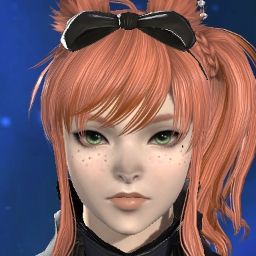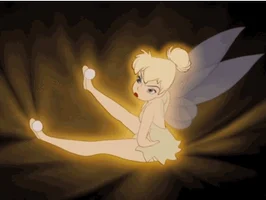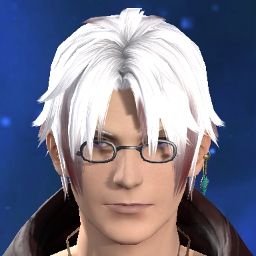imagine being so confidentially wrong.
The reason your character has a little floaty leg movement when you stop running in the current game is because you stop IMMEDIATELY. No slowing to a halt, no ramping speed when you start moving again like in 1.0.
It may be POSSIBLE (but not practical i think) to add some clever animation magic in an mmo nowadays, but please keep in mind 1.0 was over ten years ago and 2.0 was built for a console.
-
08-15-2022 09:28 AM #101Player

- Join Date
- Jan 2018
- Posts
- 936
- Character
- Lihtleita Lonstyrmwyn
- World
- Lich
- Main Class
- Marauder Lv 100
(1)
-
08-15-2022 10:16 AM #102Player

- Join Date
- Feb 2018
- Posts
- 3,320
- Character
- Sanna Rosewood
- World
- Midgardsormr
- Main Class
- White Mage Lv 100
When did this thread turn into technical talk about the games coding instead of cute pictures of landscapes?
(0)
-
08-15-2022 10:22 AM #103Player

- Join Date
- Oct 2019
- Location
- Gridania
- Posts
- 1,948
- Character
- Khit Amariyo
- World
- Leviathan
- Main Class
- Sage Lv 100
So! Tech talk time. There are two main ways to do animation in video games, "root motion" and "in-place", and the main difference—at a high-level conceptual view—is that in root motion, the animation controls the movement, while in-place generally has the movement control the animation. To elaborate...
"Root motion" means that the animation includes the movement data; if you loaded the animation file into an animation viewer, you would see the character literally move away from the origin point and walk across the screen. When using root motion, the character's animation will perfectly match their movements, because the movement was literally baked in by the animator. Nowadays, you can also do a bit of slope deformation and foot-placement IK so that the character still moves properly over (and stands correctly on) uneven terrain. Obviously, root motion is great for fidelity, and very well-suited to single-player games...
But it is terrible for any multiplayer/online system. The last thing you want is to trust every client to take all movement from the animation, because if you cut an animation short... you'd have no way of knowing whether or not you stopped correctly on every system unless you tried to sync up animation by frame numbers, and that's just... it's a potential nightmare to keep player position and movement in sync across all clients in that scenario.
Thus, most multiplayer systems that utilize root motion animation in any way will use them only for—to use the term that Unreal Engine uses—what are called "montages". These are animations (or sequences of animations) where you are guaranteed to play the entirety of the animation—a finishing move, a specific animation sequence played when opening a secret door, etc. In essence, a montage is an animation sequence which will never be cancelled or cut short.
Conversely, "in place" animations are exactly what they sound like: the animation is entirely in one place, and if you loaded the animation into an animation viewer you would see the character basically running in place as if on a treadmill. Usually you'll include metadata tracks (such as the speed at which a character is moving) calculated from the animation, but rather than using those to determine how far a character has moved, generally you will instead use it to slightly change the animation speed if it does not exactly match the character speed. This means that instead of the animation being the authority on where you are, the server can be—very important in networked gaming!—and changing the animation speed to match your character's velocity can get you "close enough" to have minimal foot sliding.
If "close enough" isn't good enough, you can engage in what's called IK locking. Which leads me to a brief digression...
The two ways you can control a character's position are Forward Kinematics and Inverse Kinematics. Forward Kinematics is where you say "the shoulder is rotated this way, then the elbow is rotated this way, etc., and all of that means the hand is here"... basically, you move forward along the chain of bones/joints in a character rig. Most animation is stored as forward kinematics. Inverse Kinematics, unsurprisingly, goes the opposite direction, traveling backwards up the chain (from hand to wrist to elbow, etc.); instead of the place where a hand is being determined by all the previous bones, you instead say "the hand is here", and trust an IK solver to figure out what that means for how the wrist, elbow, shoulder, etc., need to be positioned.
Obviously, this is more computationally expensive than Forward Kinematics, but not so much as to be prohibitive on modern systems.
So "IK locking" is when you say "the foot touched the ground here, so it will remain in this spot until I say otherwise", and then for every frame of animation, you calculate the character pose and then move the foot back to that spot, and let the IK solver resolve how that changes the rest of the character's position; this means the feet will never slide, because you're altering the animation on the fly frame-by-frame to ensure they don't. Similarly, "slope deformation" is when, for every frame of animation, you shift the feet to whatever the different heights of terrain are, and let the IK solver recalculate the character's position/balance. Hence how a character can stand on uneven terrain in many games.
(IK locking is generally not needed or used much for root motion systems, but slope deformation still is.)
Now, IK locking is easily done for a couple of characters... but if you have many, many characters on screen all at once, that many IK solvers would start to get a bit much for a lot of systems, especially on the lower end. Thus, many MMOs do little to no IK -- generally just slope deformation, which you can kind of cheese to do very cheaply (computationally speaking). Adjusting animation speed helps to keep the sliding feel to a minimum. (In the case of FFXIV, I'm not actually sure they have IK data at all; so far as I can tell, this game works solely on Forward Kinematics, hence why we do not even have slope deformation and our character will stand with feet level even on uneven terrain.)
Conversely, while I never poked around in the game engine back in 1.x, all the behavior I remember suggests to me that in the name of animation fidelity they used root motion animation. Which is a thought that strikes me as actually insane with regards to any sort of networked movement code, much less an MMO. And the only way that would be reasonably viable is if you treated all animations like montages... e.g., you did not blend between animations, and instead had many many small fragmentary animations, every one of which had to play out in full before the next one could start.
If you divided the animations up into much smaller chunks than most games do, you could minimize this to some extent, but—for instance—even if you had a "running, left foot steps forward" and a "running, right foot steps forward", if someone tried to stop as the left foot had just begun to lift from the ground, you'd still have to play out the entire sequence until it was down again. (And at a run, this little bit of extra movement can be enough to carry you over the boundary you were trying to stop at.)
Which, anything else aside, precisely matches my recollection of what movement in 1.x was like. So while I don't know that they used root motion, I sure suspect that was the case.
(Here ends the lecture; I'd apologize for my verbosity, but... I mean, we all know I'm going to do it again soon enough. My signature on these forums even admits as much.)(3)Last edited by Packetdancer; 08-15-2022 at 10:27 AM.
-
08-15-2022 10:23 AM #104
-
08-15-2022 05:45 PM #105
-
08-15-2022 05:53 PM #106
Notice how the old game looked softer and more realistic, compared to the current game, the old version being more in the direction of wow?
I think they should have changed it into something between wow/poe, everything having a unified theme.
The current game is visually draining, it's cacophonic, too much fidelity, high contrast and glitter count is really straining on the eye and mind
when they are trying to seperate these data flashbangs (in combat) and read the surrounding scenery.
Again, less would have been more in this case too.
I think they should allow modders to come up with their variations and different settings, and have a competition.
Best ones make it into the game as supported setting options.
Why would anyone care at SE? It's the players at the end of the day who have to look at it.(1)
-
08-15-2022 06:09 PM #107Player

- Join Date
- Dec 2012
- Location
- Ala Mhigo
- Posts
- 8,331
- Character
- Enkidoh Roux
- World
- Balmung
- Main Class
- Paladin Lv 90
That realism came a cost though, with the high graphic fidelity meaning they had to cut corners elsewhere to attain it, which was to the detriment of the game as a whole (and really, that came down to the poor choice of game engine - Crystal Tools was very good at making realistic real-time cutscenes - a fully realized open world was a completely different barrel of moogles.).
For instance, open areas were actually copypasted of the same landform with an occasional unique model like a tree or building, that became a landmark because they stood out - this was especially apparent in 1.0's Black Shroud.
Different sections of a zone were actually seperated by long passageways that hid loading screens - you could tell it was loading in the next area because it noticably paused for a split second (and there were still actual loading screens too - between regions)
Only a few character models were able to be shown on screen at once even in cutscenes - leading to ridiculous situations like the so-called 'parade' in Ul'dah's opening only having a handful of people watching it despite supposedly being a 'crowd',
Really, everything was just empty and samey and dull.
Screenshots and even videos unfortunately really don't show the full story, you had to have been there at the time, experiencing 1.0 in all it's laggy, ill-conceived and poorly optimized erstwhile splendour. ARR truly is the better game in every way.
-
08-16-2022 12:36 AM #108
-
10-18-2022 01:06 PM #109Player

- Join Date
- Jan 2014
- Location
- Ul'Dah
- Posts
- 1,686
- Character
- Vivian Rysto
- World
- Leviathan
- Main Class
- Scholar Lv 100
I'm back! Time for more screenies!
The Coerthas Post: Coerthas is a really interesting case because though many areas remained geographically the same, it's one of the zones with the most noticeable changes and I think the scope and beauty of the new Coerthas can sometimes go un-noticed, but let's see. I tried to match time of day for all of them.
The Gates of Judgement
1.0

2.0

____
Ishgard from the Steps of Faith - Both from beyond the Gates of Judgement
1.0

2.0

____
Bridge Design - Used for The Gargoyle and Griffin's Crossings in 1.0 and updated for the Steps of Faith in 2.0
1.0


2.0


____
The Vigils - Huge improvement imho
The Stone Vigil:
1.0

2.0

The Steel Vigil:
1.0

2.0

The Dusk Vigil:
1.0

2.0

____
Ishgard from the Stone Vigil
1.0

2.0

That's it for now!(1)Last edited by DiaDeem; 10-18-2022 at 01:26 PM.

-
10-18-2022 01:33 PM #110Player

- Join Date
- Mar 2015
- Location
- New Gridania
- Posts
- 2,805
- Character
- Inglis Eucus
- World
- Cuchulainn
- Main Class
- Reaper Lv 100
1.0 was a way better looking than it is now. It had huge city states compaired to small city states that we have now. I built my first pc just to play it and do the beta for it. Graphics to it was very pretty.
(0)





 Reply With Quote
Reply With Quote









